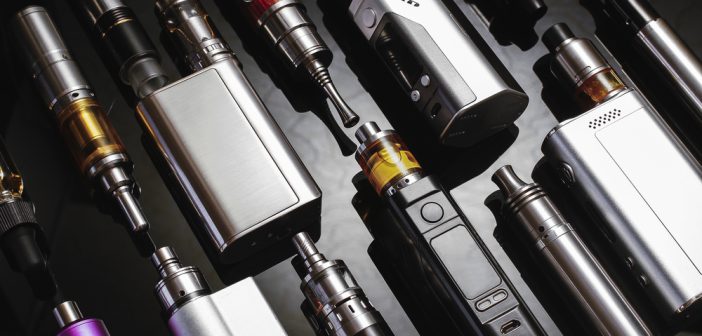By Ollie Norman, Content Marketing Manager at LiQuid
Consuming nicotine by vaping is more popular than ever. In 2022, 7% of 11-17 year-olds vaped, up from 3.3% in 2021 and 4.1% in 2020, according to Action on Smoking and Health. However, its popularity highlights potential risks.
A ’vape’, often known as an electronic cigarette, is a device that heats a liquid to produce vapour that the user inhales. While it is a legal alternative to cigarettes, its health risks must be investigated.
If you suspect that your child has started vaping, or want to know how vaping works, read the guide below.
What is the procedure for vaping?
Vaping devices are available in a wide range of forms, sizes, and colours. Devices heat an ’e-liquid’ (or ’vape juice’) that will likely contain flavourings and other ingredients. The in-built coil heats this liquid, producing a flavoured aerosol byproduct. This liquid delivers nicotine to the user via a mouthpiece, which is inhaled into the lungs and then ejected through the mouth or nose.
Inhaling any substance that is not normally present in the body might impair the functioning of the lungs, heart, and blood vessels. The effects of cigarette smoke on cardiovascular function have been widely studied and proven to be exceedingly unfavourable, but there is less long-term research on vaping because it is relatively new.
What are the effects of nicotine on the body?
As soon as nicotine is consumed, it enters the bloodstream and is dispersed throughout the body. This results in an immediate increase in blood pressure and heart rate. A person with cardiovascular issues who consumes an excessive amount of nicotine may suffer severe health consequences.
Smoking is also known to damage tooth health. It can assist in causing the following:
- Tooth decay
- Gum infections
- Gum recession
- Dry mouth
Is vaping more harmful to your health than smoking?
Despite concerns between vaping and hospitalisations, such cases can mostly be attributed to e-liquids containing Vitamin E and THC – both of which are rarely found in publicly available vape devices in the UK.
An independent study conducted by Public Health England discovered that e-cigarettes are 95% less dangerous than cigarettes – but, as previously stated, the long-term effects of vaping are unknown, so this figure is calculated based on the absence of certain chemicals found in cigarette smoke, such as tar and carbon monoxide.
Cigarettes release thousands of chemicals, at least 70 of which are carcinogenic – cancer-causing. E-liquid, on the other hand, contains a fraction of these chemicals, but not zero.
As outlined above, the nicotine delivered by vaping can result in health issues. In severe circumstances, nicotine can be harmful to people with cardiovascular problems or to people who combine it with strenuous physical activity. As a result, nicotine’s hazards must be contextualised and linked with the individual’s health before it can be deemed safe.
What should I do if my child is vaping?
Begin by asking your child, in a nonjudgmental, compassionate manner, if they have tried vaping. You want to start an honest conversation, not shut it off. Even if you don’t think your children vape, talk to them about it so they realise its dangers.
The following are signs that your child may be vaping:
- New health risks, such as coughing or wheezing
- Owning e-cigarette accessories, such as cartridges or other pen-shaped devices
- New smells (you might notice fruity or sweet scents)
As with any addictive substance, every parent must communicate the hazards with their child. If your kid is above the age of 18 and wants to use vaping to help them make the switch from smoking, it is critical that they find a trustworthy vendor for vaping products that have been extensively tested and made in the UK.
Be cautious with disposable vapes
Disposable vapes are a likely way for your child to be exposed to vaping. The compact, brightly coloured devices are very popular, making them a sought-after status symbol among under-18s. Multiple polls have found that one in every five 15-year-olds across the UK have tried or frequently use disposable vapes.
Because of their enormous demand, a number of untested illegal disposables have appeared in UK shops. Because these are not legal owing to Tobacco Goods Directive (TPD) legislation (rules that govern the safety of all vaping products before they can be marketed), we cannot know what is within them as customers.
These unauthorised versions can be identified by:
- Being greater in size than typical disposable vapes
- Claiming to deliver more than 500-600 puffs (1,000-3,000 puffs are common examples)
- Containing any nicotine level above 2% (equivalent to 20mg, the legal UK limit)
Even tested legal disposable vapes contain smooth e-liquid, which means your child may vape it without realising they’re breathing the maximum legal level of nicotine – equivalent to 50 cigarettes per 500 puff bar. While 2% may not appear to be much, it is really powerful.
Where do kids acquire their disposable vapes?
Underage selling is a major problem in the United Kingdom right now. Trading Standards has received many allegations indicating that youngsters have been:
- Purchasing them online with fake accounts to avoid age verification
- Purchasing them from small vendors, such as corner shops
- Purchasing them in supermarkets, despite supposedly tougher measures
- Being handed them by older teenagers or school friends
Speak out
If you are concerned about your children vaping, whether at home, school, or with their friends, speak up and don’t be afraid to ask questions. You are not alone; millions of households in the UK are dealing with this issue, and there is help and guidance available to help you understand the true risks and how to deal with them.
Action on Smoking and Health has recently issued special guidance to assist schools in properly developing vaping policies in schools to protect and educate pupils and teachers alike – speak to your child’s school about this and ensure they are doing everything they can in accordance with this new guidance to keep your children safe and vape-free; they may even be able to provide advice for you at home.





Thanks for sharing this informative post with us, I am looking for disposable vape edmonton and while searching for it on google, I am glad I found your post. Please share more informative posts like this.
Vaping without nicotine has become increasingly popular in recent years, as more people look for alternative ways to enjoy the experience of vaping without the addictive effects of nicotine. Unlike traditional cigarettes, non nicotine vapes do not contain any tobacco or tar, making them a healthier option for those looking to reduce their intake of harmful chemicals.